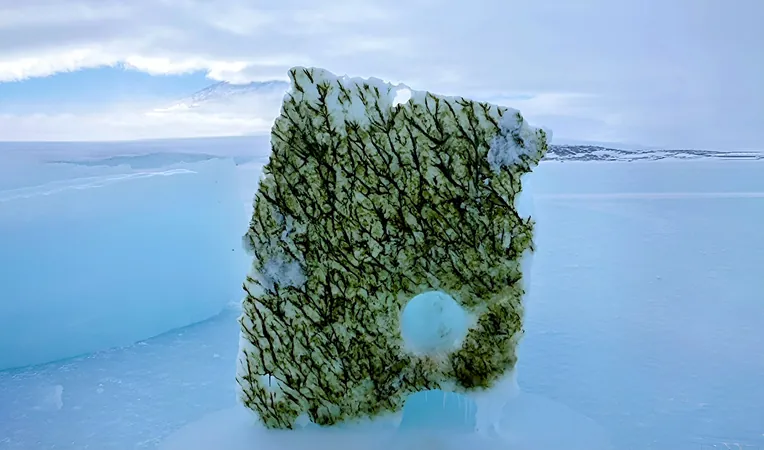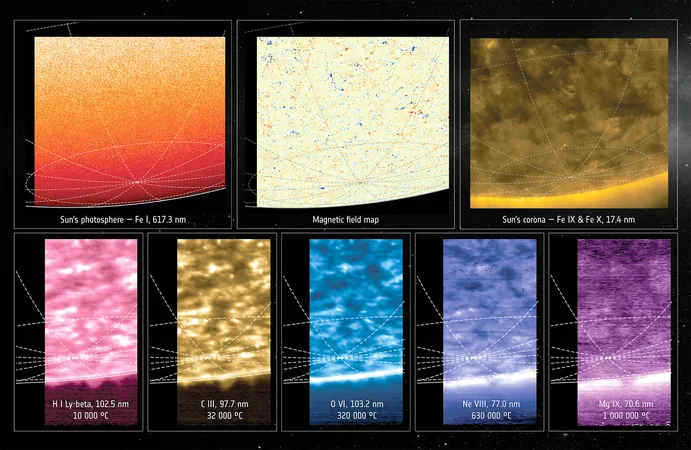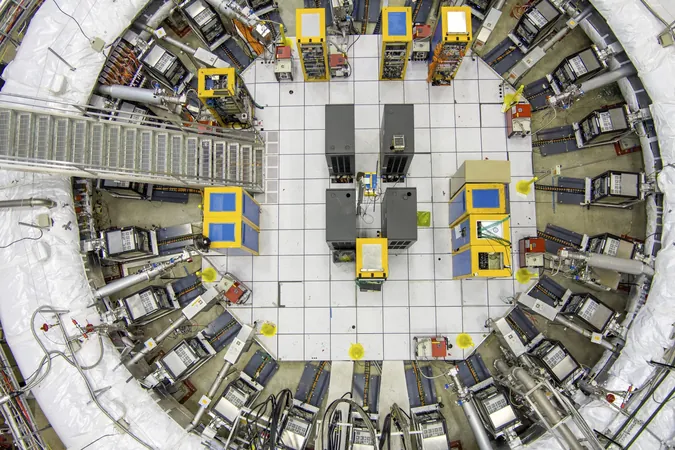
Melting Sea Ice Decimates Ocean Light Spectrum: What It Means for Marine Life
2025-05-03
Author: John Tan
A Change in Ocean Light: The Hidden Impact of Melting Sea Ice
Sunlight fuels the vibrant life of oceans, but in the frigid polar realms, its penetration is drastically limited by thick layers of snow and ice. This dim yet essential light has been adapted to by marine life for eons, particularly algae and phytoplankton, which flourish in these unique, low-light conditions.
However, climate change is wreaking havoc. As sea ice disappears at alarming rates, it’s not just polar bears facing peril; the entire underwater ecosystem is being transformed. New research from the University of Amsterdam sheds light on a critical consequence of this melting: the ocean's light spectrum is changing, presenting a series of challenges for marine organisms.
The Science Behind Light and Life
Under sea ice, light behaves differently than in open waters. Ice reflects most sunlight and scatters what little makes it through, creating a varied light spectrum critical for vibrant marine life. The few wavelengths that penetrate—including red, green, and blue—provide a rich resource for photosynthetic organisms.
In contrast, clear ocean water absorbs red and green light almost entirely, allowing blue to thrive. As ice melts, the light spectrum narrows significantly, leaving organisms beneath it exposed to a predominately blue environment.
The Ripple Effect on Marine Ecosystems
This shift isn't just a trivial change; it profoundly impacts photosynthetic algae and phytoplankton. These organisms have adapted their pigments to efficiently capture light across a broad spectrum, but with shrinking light diversity, survival becomes a race against time.
Research indicates that as underwater environments shift from varied colors to a blue-dominated spectrum, some species may flourish while others dwindle. For instance, ice algae that flourish under diverse light are at risk, while simpler blue specialists like Micromonas, which thrive in depleted spectra, may come to dominate.
The Domino Effect on Marine Life
The consequences of these changes reach far beyond algae. As foundational elements of the Arctic food web, their decline can destabilize entire ecosystems. With less algae to support fish, seabirds, and marine mammals, the entire balance of marine life is jeopardized.
Moreover, this loss threatens the ocean's ability to sequester carbon dioxide, exacerbating climate issues. Fewer algae mean reduced photosynthesis, weakening the ocean’s natural carbon buffer.
Looking Ahead: The Need for Precision in Climate Models
Current climate models often overlook the intricate details of how light capitalizes underwater. This new research emphasizes the importance of understanding light’s interaction with marine life to make accurate ecological forecasts. If we hope to predict and mitigate the consequences of climate change effectively, integrating these findings into future models is critical.
Can Marine Life Adapt Fast Enough?
Some species demonstrate flexibility—like Phaeocystis, which can adjust pigment use based on available light. Yet, the speed of climate change presents an urgent question: can evolution keep pace with the rapid loss of sea ice?
As the polar waters turn increasingly blue, the entire underwater landscape is undergoing an unseen transformation, highlighting the profound influence of light on life. The findings of this study, published in 'Nature Communications', remind us that the oceans' fate is intertwined with the vanishing sea ice.





 Brasil (PT)
Brasil (PT)
 Canada (EN)
Canada (EN)
 Chile (ES)
Chile (ES)
 Česko (CS)
Česko (CS)
 대한민국 (KO)
대한민국 (KO)
 España (ES)
España (ES)
 France (FR)
France (FR)
 Hong Kong (EN)
Hong Kong (EN)
 Italia (IT)
Italia (IT)
 日本 (JA)
日本 (JA)
 Magyarország (HU)
Magyarország (HU)
 Norge (NO)
Norge (NO)
 Polska (PL)
Polska (PL)
 Schweiz (DE)
Schweiz (DE)
 Singapore (EN)
Singapore (EN)
 Sverige (SV)
Sverige (SV)
 Suomi (FI)
Suomi (FI)
 Türkiye (TR)
Türkiye (TR)
 الإمارات العربية المتحدة (AR)
الإمارات العربية المتحدة (AR)